#order cannabis seeds
Explore tagged Tumblr posts
Text
Unveiling the Finest: Discover the Best Cannabis Seeds for Unparalleled Growth
When it comes to achieving remarkable cannabis cultivation, nothing compares to the quality of our handpicked selection at The Clone Conservatory. Our meticulously curated range of premium cannabis seeds offers genetic excellence, promising robust plants, impressive yields, and diverse cannabinoid profiles. Elevate your cultivation journey with the best cannabis seeds available.
#best cannabis seeds#cannabis seeds for sale#cannabis seeds cultivation#cannabis seeds online#order cannabis seeds
0 notes
Text
Weed is now (somewhatttt) legal in my country.
Stilllll not sure if it's an elaborate April fool's joke or not lol
#mek garbles#i am... this 👌🏻 close to ordering seeds my dudes and giving it the ol try#legalize cannabis
10 notes
·
View notes
Text
Discover Wellness with Cannamart’s Edible and Medicinal Cannabis Products
Cannabis is rapidly transforming the landscape of health and wellness in South Africa, and Cannamart is leading this change with its range of thoughtfully crafted products. From alleviating pain to promoting relaxation and better sleep, cannabis-based solutions are becoming a trusted choice for holistic well-being. At Cannamart, the emphasis is on providing accessible and effective options for the local market.
Imagine combining the health benefits of cannabis with the simple pleasure of a delicious treat. Cannamart’s range of edible cannabis products offers exactly that. These edibles, including gummies and chocolates, are infused with cannabinoids, making them both effective and enjoyable.
Why Choose Edibles?

Health Benefits
Beyond their taste, edibles can help manage anxiety, pain, and sleep disorders. By ingesting cannabis, the effects tend to last longer, providing sustained relief throughout the day or night.
Medicinal Cannabis Products — Nature’s Healing Power
Cannamart’s medicinal cannabis products stand out as therapeutic solutions for those seeking relief from chronic ailments. Whether it’s oils, topicals, tinctures, or capsules, these products are tailored to support your health naturally.
Popular Choices
A key highlight is Full Extract Cannabis Oil (FECO), renowned for its potent concentration of cannabinoids and terpenes. This oil is particularly effective for addressing inflammation, chronic ailments, pain, and even sleep issues.
Holistic Benefits
Medicinal cannabis works by interacting with the body’s endocannabinoid system to promote homeostasis and balance. Cannamart’s products are especially effective for managing relief from chronic pain, cancer, neurological and mental disorders, and improving quality of life.
Quality You Can Trust
Every product is carefully formulated to ensure safety and efficacy. Cannamart collaborates with local producers who prioritize sustainability and environmental consciousness, ensuring the highest standards of quality for their customers
Why Cannamart?
Cannamart is committed to redefining wellness in South Africa by offering premium cannabis solutions designed for the local market. They don’t just sell products; they provide education, guidance, and unwavering support for their customers.
Local Focus
Unlike brands targeting international markets, Cannamart tailors its approach specifically to South African needs.
Sustainability at Heart
By working with environmentally conscious producers, Cannamart ensures its products not only support personal wellness but also contribute positively to the planet.
Experience the Cannamart difference
From edible cannabis products that delight your taste buds to medicinal cannabis products that heal your body, Cannamart has something for everyone. As the cannabis industry continues to grow, Cannamart remains a trusted name for those seeking natural, effective, and locally relevant solutions.
Discover the benefits of these incredible products by exploring Cannamart’s offerings today. Whether you’re looking for relief, relaxation, or a way to enhance your lifestyle, Cannamart is here to guide you every step of the way.

#buy cannabis tinctures online#Edible Cannabis Gummies#Edible cannabis products#100% Organic Medicinal Mushrooms#Best Cannabis in South Africa#Medicinal Cannabis Online Shop#Premium Quality CBD Products Online#Organic CBD Hemp Oil South Africa#Cannabis Topicals for Pain Relief#Best Organic Hemp Seed Oil#Medicinal Cannabis Products#Order Cannabis Products Online#Cannabis Vapes#FECO#Medicinal Cannabis for Pets
0 notes
Text
ok so here is my best understanding of weed from someone who has never smoked it, except for that one time i smoked it.
weed is apparently a flower not a leaf. the other bits have thc but people are wusses and don't smonk them. EXTREMELY silly since the cannabis leaf shape is so iconic. (the only parallel that even comes close is that the aminita muscaria is the icon of psychedelics despite not being a psyllocybin mushroom.)
i think like only one sex of plant has flowers that are worth smonking and it's a big thing to ensure all your seeds are female.
for some reason chewing it raw doesn't get you high you need to heat it up? (which i learned because i was worried that if i could smell unburnt weed in storage i was getting a contact high)
in general i feel that weed fans are maybe a bit of pussies like idk, simply smoke 3x the weed if it has 3x lower concentration, idgi? skissue.
People have strong opinions on how to get their weed but it seems like generally: in illegal places you talk to the most annoying person you know, and in legal places you go into an app store and place an order on an iPad and if you go to the front desk they say they can't help you, place an order on the ipad. or you order it online with various promises about how fast it'll get there and how little you need to interact with another human being.
there is an item known as a grinder which seems terribly designed and intended to spill as much cannabis on the ground as possible. why does this item look like a petri dish and not have an inbuilt funnel or something? i do not know.
the grinders job is to turn weed, which started life as loose ground up buds and was compacted into brussel sprouts of slightly more compressed ground up buds, into loose ground up buds, so it can be recompacted into slightly more compressed ground up buds in a weed cigarette bunt
the airflow of a joint is a mystery to me because my mental model of it is just you take the rolling paper and roll it up, lick it to seal it shut, and then twist the ends shut like a tootsie roll. which would block you from being able to suck the air in, no? my best guess is it's not entirely airtight and you just draw breath through the paper.
similarly, once you light it i don't understand what prevents the weed from spilling out the open end. if you blew on a joint would it spray everyone with smouldering weed?
i think most joints are unfiltered because idk. in general ig my perception is that cigarette users prize the aesthetics of a manufactured and standardized product while weed users prize the aesthetics of handrolling as a craft.
theres some substance called resin that makes it more thc-y. presumably it's just you blend up the rest of the plant and distill it?
blunts are either cigars with weed in them (do they still have a tobacco leaf as the wrap??) or just a big joint I'm not sure.
you can also, if you're normal, use a pipe or a bubbler or bong. this is very sensible and i understand how these work.
i don't understand why the weed pipe is that particular form and not like a tobacco pipe. or like why are the tobacco pipe, crack pipe, and weed pipe all different??
If you're a wuss, you can eat a gummy, either the thc kind that does something or the cbd kind that does nothing. you eat this and "nothing happens" and you have 4 more and then you explode, and apparently this happens to everybody. skissue.
the primary effect of weed is that you feel uncomfortable and want to eat food except ur mouth feels bad when it eats food. secondarily time goes slower (which, by the time-flies principle, implies you're not having fun?)
theres sativa which is if you want to have a fun joyous intriguing time, and indica which is boring. People make a lot of this difference and it's always like "there's two types of cowstuff, prime rib and literal cowpies"
if you smoke weed you get a tolerance and if you stop smoking you get less tolerance. so theres a ritual of taking a break to reset the tolerance. i find this oddly charming.
23 notes
·
View notes
Text
told myself i'd sit down and get some work done and instead i've made half a dozen clay mushrooms and ordered a packet of cannabis seeds
13 notes
·
View notes
Text
Ok Washington state has done pissed me the fuck off with their bullshit taxes and shipping restrictions. I’m a fucking cannabis grower and I can’t order a fucking tobacco pipe online?? I can order shrooms and not a fucking corn cob pipe?
These fucking insane commies won’t keep me down. I’m going to learn to grow the plants necessary to make the pipes and the tobacco and I’m going to teach as many mother fuckers as I can to do the same thing.
I STG the commie fucks ruin every state they touch.
6 notes
·
View notes
Text
Growing foxtial millet, QMYS Section 3, Part 1
Continuing the Qimin yaoshu齊民要術 (“Essential Techniques for the Common People) by Jia Sixie (fl. c. 540). Advice for growing foxtail millet. Due to the length of this section, the translation will be divided into several posts. This post covers the introductionary dictionary definitions and Jia Sixie's own advice. Subsequent posts will cover the extensive quotations from earlier works.
[Translator's preface]
After opening the book with two general sections on tilling the fields and selecting seed grain, sections 3-54 cover the cultivation of specific plants (field crops, vegetables, fruit- and timber-trees, dye plants). The first, and lengthiest, of these is dedicated to the foxtail millet (Setaria italica). Known under many names, in Jia Sixie's home region it was often simply referred to as gu穀, “grain”. I suppose you could draw parallel to calling maize “corn” in English. Foxtail millet was first domesticated in North China during the Neolithic and remained the main staple crop there during the Early Medieval North China, . As such, by the time QMYS was written, Jia Sixie could draw on several millennia of experience with foxtail millet farming.


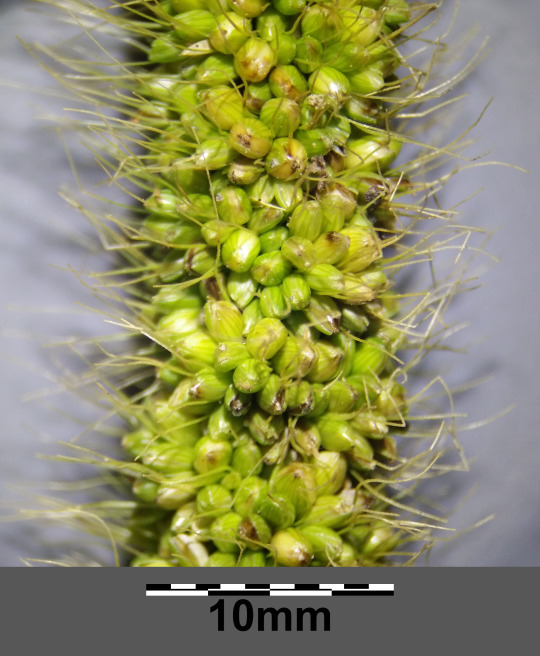
[Other plants mentioned]
Certain other plants are mentioned more incidental in this section.
Plants more or less suited to precede foxtail millet in a crop rotation system:
Mung beans or green gram (Vigna radiata), lüdou緑豆 (lit. "green beans"), used as green manure in crop rotation with millet.

Adzuki beans (Vigna angularis), xiaodou小豆 (lit. "small beans") served a similar function.
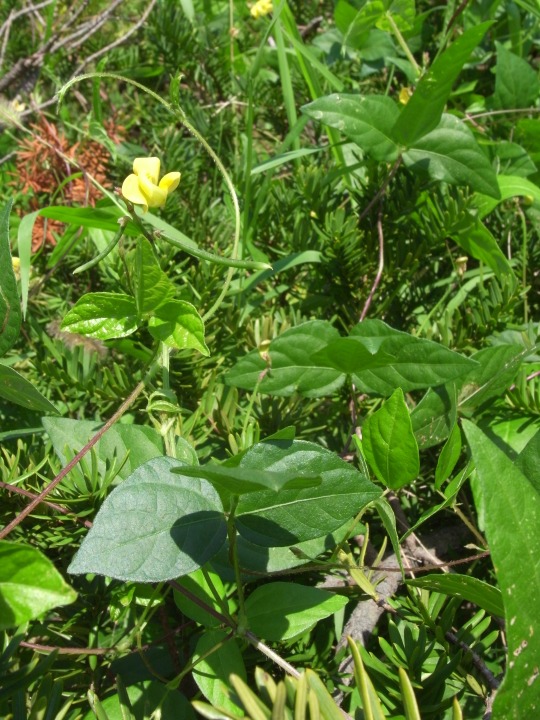
Hemp (Cannabis sativa), ma麻, grown both for textiles and oil

Broomcorn millet (Panicum miliaceum), shu黍, popular for brewing millet beer

Sesame (Sesamum indicum), huma胡麻 (lit. “foreign hemp”), considered the best oilseed crop

Turnip (Brassica rapa var. rapa),wujin蕪菁, leaves and roots are edible, and the seeds can be pressed for oil.

Soybean (Glycine max) dadou大豆 (lit. “large beans”), used as fodder or famine crop, but also fermented into sauces, etc.
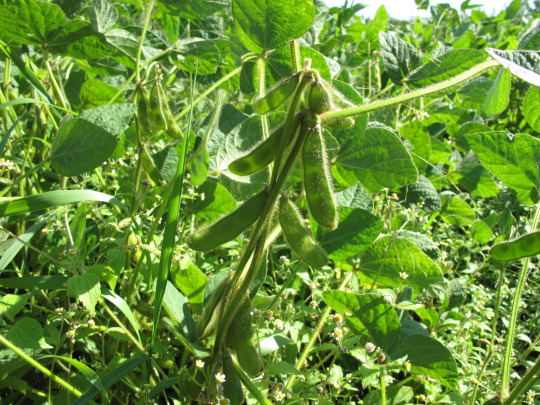
Gua底 is a general term for gourds and melons
Trees whose leaves and flowers can be used to predict the best time for sowing foxtail millet:
Beiyang菩楊 appear to refer to some kind of willow (Salix) or poplar (Populus)

Peach (Prunus persica), tao 桃

Jujube (Ziziphus jujube), zao棗
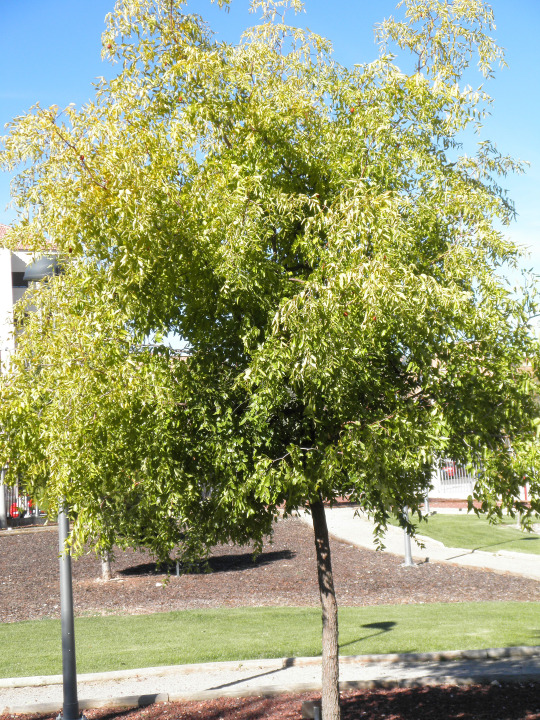
Mulberry (Morus alba), sang桑

[Tools]
The illustrations below are taken from Wang Zhen's王禎 (1271-1333) Nongshu農書, who of course wrote several centuries after Jia Shixie. While many tools were essentially timeless and in continuous use up to the modern age, developments did happen, and also terminology could change.
The preferred tool for sowing was the seed drill, lou耬
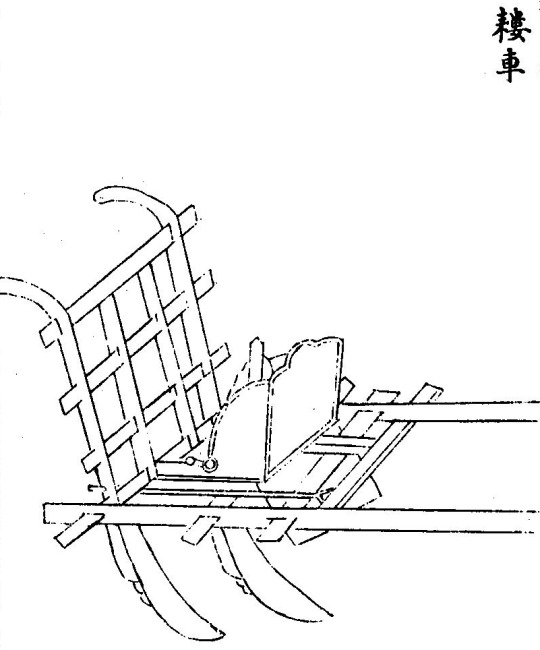
(Wang Zhen's louche耬車).
The “beater”, ta撻, (for a lack of a better translation) was pulled over the furrows after sowing to compact them. Wang Zhen describes this tool as a bunch of branches weighed down by stones.
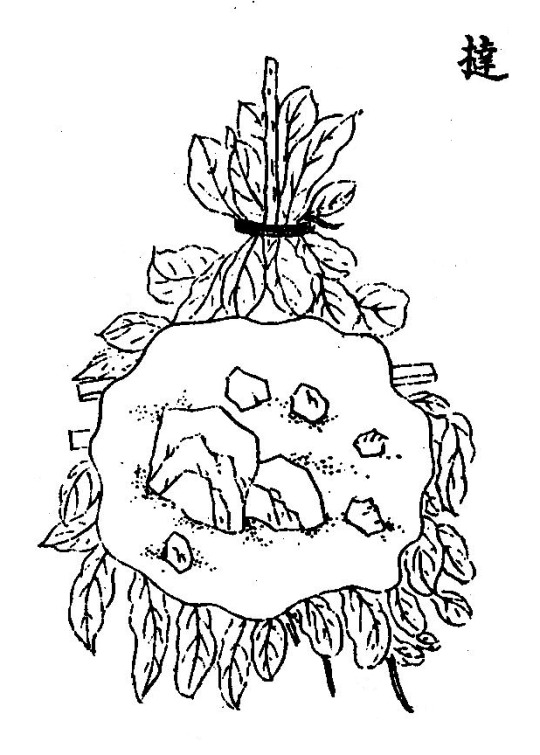
The arrowhead hoe, zuchuo鏃鋤 was a small, pointed hoe. According to Wang Zhen, arrowhead hoeing was one of four methods for hoeing with the youchu耰鋤.
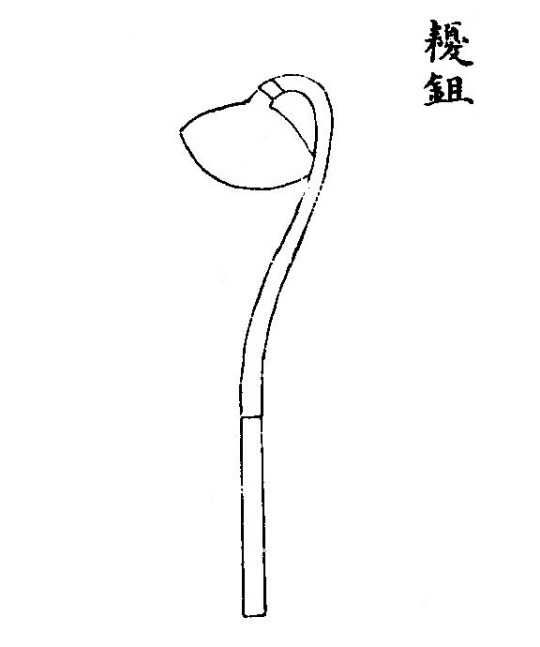
QMYS is the oldest text to refer to the iron-tine rake, tiechi loucou鐵齒𨫒楱
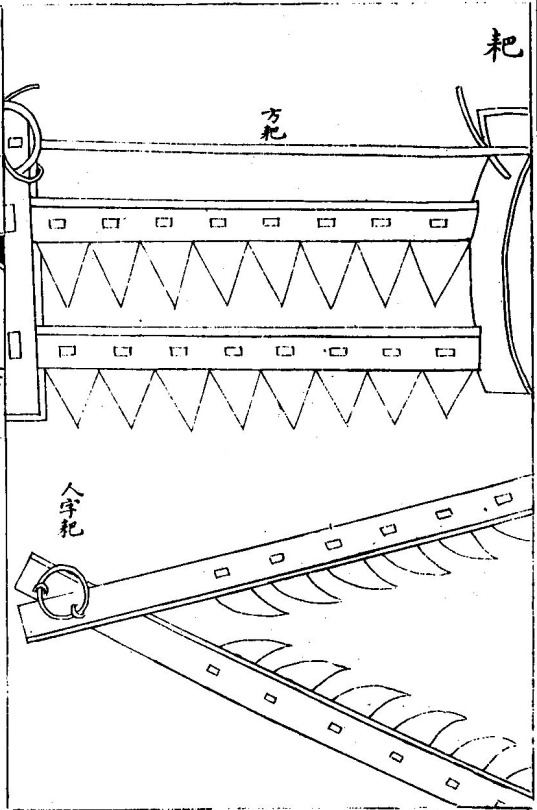
QMYS quite often refer to the spear-harrow, feng鋒. Wang Zhen notes that by his time it was no longer in use, his description of it as a cross between a plough and a spade may therefore not be very accurate.

The sickle, yi刈, was the main tool for reaping field crops.
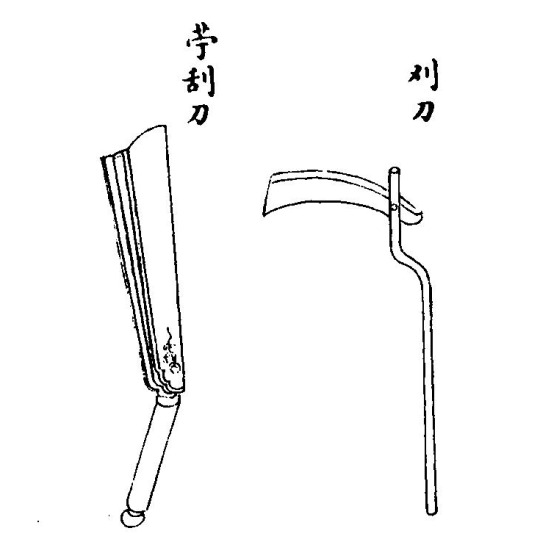
(Wang Zhen's yidao刈刀)
[Books quoted by QMYS in Section 3, in order of appearance]
The Erya爾雅 (“Approaching the Correct”) is the oldest surviving Chinese glossary. Modern scholarship dates the book to the late Warring States and/or early Western Han periods. It is quoted numerous times in QMYS. This is the second QMYS section to quote from the Erya. The last previous was Section 1 (“Tilling the Fields”).
The Shuowen 說文 (“Explaining Graphs”) by Xu Shen許慎 (c. 58 – c. 147) analyses the composition and reasoning behind the different characters. It is quoted numerous times in QMYS. This is the second QMYS section to quote from the Shuowen. The last previous was Section 1 (“Tilling the Fields”).
The Guangzhi廣志 (“Wide Treatise”) by Guo Yigong郭義恭 (Western Jin) is now lost, but it is quoted numerous times in QMYS and other books. This is the first QMYS section to quote from the Guangzhi.
Guo Pu郭璞(276 – 324) was a Daoist wizard, poet and writer. His surviving writings include the oldest extant commentary on the Erya and a commentary on the Shanhaijing. This is the first QMYS section to quote Guo Pu, from his Erya commentary.
Sun Yan孫炎 lived during Wei and was disciple of Zheng Xuan. He wrote (a now lost) commentary on the Erya where he pioneered the use of the fanqie system to indicate pronunciation. This is the first QMYS section to quote Sun Yan.
Liu Zhang 劉章(200 – 176) was a grandson of the Han founder. According to the Shiji he recited the Gengtian ge 耕田歌 (“Song of Ploughing the Fields”)at a banquet during the regency of Empress Dowager Lü, to show his opposition to the Lü clan's power, and he later became one of the main actors in their downfall.
The Guanzi管子 (“Master Guan”) is a collection of treatises on statecraft traditionally attributed to Guan Zhong管子 (d. 645 BC9), an influential minister in Qi during the Spring and Autumn era. Section 3 contains the third quote from the Guanzi in QMYS, the first two are in the preface (which I have impudently skipped).
[The original text is a mix of large and small characters. I have collected the small text sections together as indented notes within {} brackets.]
[Translation starts here]
Section 3, Growing Foxtail millet
Growing foxtail millet [gu穀]:
{“Grain” gu穀 and “foxtail millet” ji稷 are names for setaria millet [su粟]. Grain is the collective name for the Five Grains, and does not mean setaria millet. However, today people solely consider foxtail millet to be “grain”, and [I] look to the customary name for it, and that is all.} [For the remainder, gu穀 will be translated as “foxtail millet” in the sections written by Jia Sixie, ji稷 will generally be rendered also as “foxtail millet”, and su粟 as “setaria millet” (or just “foxtail” and “setaria”).] {The Approaching the Correctsays: “Zi粢 is foxtail millet [ji稷].”} {The Explaining Graphs says: “Setaria millet [su粟] is the fruit of excellent grain [gu穀].”} {Guo Yigong's Broad Treatise says: “The names of the kinds are Red Setaria and White Stem, Black-Patterned Sparrow Setaria, Duke Zhang's Mottled, Enclosed Yellow-Iron-green, Dark-green Foxtail, Snow-White Millet – likewise named White Stem, also White-Indigo Short, Bamboo Head-Stem Dark-green, White Wheat-Catching, Stone-Pulling Purest, Earth-black Dog-Paw.”} {Guo Pu's Annotations to the Approaching the Correct says: “Today in Jiangdong they call foxtail millet zi粢.”} {Sun Yan says: “Foxtail [ji稷] is setaria [su粟]”} {Note that the present age's names for setaria, many uses a person's family and courtesy names as the label name. There are likewise those where look and form established the names, and likewise those where what happened to be appropriate became the designation, [I] rely on them then to set them out, and that is all:} {Vermillion Foxtail, Highland Yellow, Liu Zhuxie, Daomin Yellow, Whittled-Grain Yellow, Sparrow's Regret Yellow, Continued Life Yellow, Hundred Days Grain, Upright Wife Yellow, Unworthy-of-Rice Grain, Slave Child Yellow, Jiazhi Foxtail, Schorced Gold Yellow, Quail's Slipper Iron-green which is also named Wheat's Floor-Fighter: These fourteen types ripen early and endure drought, early ripening avoids insects. The Whittled-Grain Yellow and Unworthy-of-Rice Grain types have a pleasing taste.} {Now-Fell-off-the-Chariot, Short Horse-Carer, Hundred Flock Sheep, Hanging Snake Red-Tail, Bear-Tiger Yellow, Sparrow's and People's Benefit, Horse Reins, Liu Pig Red, Li Yu Yellow, Amba Grain, Donghai Yellow, Rocky lesuo䮑歲, Dark-green-Stalked Dark-green, Dark Excellent Yellow, South-of-the-Paths Crop, Nook-and-Dike Yellow, Song Ji's Idiocy, Point Out Yellow, Rabbit Foot Dark-green, Kind Sun Yellow, Shifting Wind Red, Single Sunlight Yellow, Mountain Saline, Dundang Yellow: These twenty-four types all have spikes with bristles, endure wind, and avoid harassment from sparrows. The Single Sunlight Yellow type is easy to hull.}
{Precious Pearls Yellow, Popular Gain White, Zhang Lin Yellow, White Salt Foxtail, Thousand Hooks Yellow, Zhang Yi Yellow, Gleaming Tiger Yellow, Chief Slave Red, Reed-Stalk Yellow, Xun Pig Red, Wei Shuang Yellow, White-Stalked Dark-green, Bamboo-Rooted Yellow, Attuned Mother Large-grained millet, Rock-Pile Yellow, Liu Sand-White, Seng Long-lasting Yellow, Red Large-grained Foxtail, Auspicous Swift Yellow, Otter-Tail Dark-green, Continued Potency Yellow, Concave-Straw Yellow, Sun Long-lasting Yellow, Pig-Shit Dark-green, Smoking Yellow, Happy Slave-girl Dark-green, Level Long-life Yellow, Deer Stubble White, Salt for Breaking Baskets, Yellow dianshan, Hilly Place Yellow, Red Ba Large-grained millet, Deer Hoof Yellow, Famished Dog Iron-green, Can-be-Pitied Yellow, Hulled Foxtail, Deer Stubble Dark-green, Aluoluo: These thirty-eight types are the single stems great foxtails? [the received QMYS text is defective at this point]. The White Salt Foxtail and Attuned Mother Large-grained millet types have a pleasing taste. The three Concave-Straw Yellow, Hilly Place Yellow and Pig-Shit Dark-green types are bad tasting. The Yellow dianshan and Happy Slave-girl Dark-green types are easy to hull.} {Bamboo-Leaf Dark-green and Rocky Yichu, Bamboo-Leaf Dark-green is also named Hu Foxtail, Water Black Foxtail, Swift Mud Dark-green, Charging Heaven Cudgels, Pheasant Chick Dark-green, Owl-Foot Foxtail, Goose-Head Dark-green, Hold-Piles Yellow, Dark-green Hawk-cuckoo: These ten types ripen late and endure floods. If there is a calamity of insects, they are consumed.}
In general there is foxtail which is fully ripened early or late, which sprouts and straw are tall or low, which harvest results are large or small, which natural quality is strong or weak, which hulled grain taste good or bad, which grain results in gains or losses{A}. The conditions of the land can be good or poor{B}, and mountains and marshes differ in what is suitable{C}. Obey Heaven's seasons, and evaluate the land's advantages, then [you] will employ little strength yet achieve success many times. Rely on feelings and go against the Way, [you] will toil and yet get nothing.{D}
{A: Those that ripen early have short sprouts and the harvest is large. Those that ripen late have long sprouts and the harvest is small. Those which strong sprouts are short, and belong to the yellow foxtail. Those which weak sprouts are long, and are dark-green, white, or black. Those with small harvests are good but make losses. Those with large harvests are bad but make gains.} {B: Good fields are suitable for late types, poor fields are suitable for early types. Good land is not solely suitable for late types, early types are also not harmful. Poor land is suitable for early types, late types will certainly not give successful result.} {C: For mountain fields, types with strong sprouts, to avoid wind and frost. For marsh fields, types with weak sprouts, to aspire to splendid results.} {D: Enter a spring to chop wood and climb a mountain to look for fish, and the hand will surely be empty. To face the wind when sprinkling water, or to go against the slope when moving a pellet, these conditions are difficult.}
In general for foxtail fields, mung beans or adzuki beans as the previous crop is the best; hemp, broomcorn millet, and sesame are next; turnip and soy beans are last.
{It is common to see gourds as the previous crop, they are no less than mung beans. Originally they were not discussed, for the moment then keep it in mind.} [This note may be a later addition.]
For 1 mu of good land, use 5 sheng of seeds, and for poor land 3 sheng.{A} Foxtail fields certainly must be changed annually.{B} Those sown in the 2nd Month or the 3rd Month are the early-planted grain. Those sown in the 4th or 5th Month are the late-planted grain. From 2nd Month, First Ten-day, until the hemp and beiyang willow sprout seeds is the best time. 3rd Month, First Ten-day, until the Pure and Clear [qingming] Period and the peach tree first flower is the middle time. 4th Month, First Ten-day until the jujube leaves sprout and the mulberry flowers fall is the worst time. For those which the yearly Way ought to be late, the beginning of the Fifth Month or Sixth Month are also possible.
{A: This is for early-planted foxtail, for late fields increase the number of plants.} {B: If twice sowing the seeds, the weeds will be many, and the harvest poor.}
In general spring sowing wish to be deep, and ought to be dragged with a heavy “beater”. Summer spring wish to be shallow, and just sprout from itself.
{Spring air is cold, and sprouting is slow. If not dragged with a “beater”, they will set root in hollows, and even if they sprout, they will immediately die. Summer air is hot, and they sprout quickly. [If] dragged with the “beater” and there happens to be rain, [the ground] will surely be hard and dry. Those in the spring that are very moist sometimes also are not necessary to beat. To be certain they want beating, [you] ought necessarily to wait for [the ground] to turn white. Wet beating will cause the ground to be hard and tough is the reason.}
In general when sowing foxtail, after rain is good. If there is a little rain, [you] ought accept the wetness and sow. If there is great rain, wait for the weeds to sprout.{A} During spring, if there is drought, on the land of the autumn tilling [you] might open the mounds and wait for rain.{B} During summer, if there are open mounds, not only will it sweep away and wash out that which does not grow, [but] in addition it and the grassy weeds will set forth together.
{A: [If] there is a little rain and [you] do not accept the wetness, there is nothing to give birth to the stalks sprouting. [If] there is great rain and [you] do not wait for [the ground] to turn white, wet rolling then will cause the sprouts to be frail. If weeds are abundant, to first hoe one time everywhere and afterwards accept sowing then will be good.} {B: On the spring-tilled, it does not hit the mark.}
In general the fields that want early or late are mixed together.{A} In years that are intercalary, after the solar periods draw close, [you] ought to have late fields. However for the most part [you] want early, early fields yield more than late.{B}
{A: Prepare for what is proper in the Way of the year.} {B: Early fields are clean and easy to manage. The late ones overgrow with weeds and are difficult to manage. Their harvest, regardless of large or small, follows from is proper for the year, and is not connected to early or late. However, early foxtail have thin husks, the hulled grains are solid and many. Late foxtail have thick husks, the hulled grain are small and empty.}
When the sprouts have grown similar to horse ears, then arrowhead hoe.{A} At places with gaps and holes, hoe and patch them.{B} In general for the Five Grains, only the small hoe is good.{C} For good fields, usually for each chi [foot], keep one hole.{D} For poor land, seek out mounds and tread on them.{E}
{A: The proverb says: “Want to get foxtail, at horse ears the arrowhead.” } {B: The work done might not be overstated. The profit gained this way is a hundred times.} {C: The small hoe not only saves strength, the grain is also twice as good. With a large hoe, the grass and their roots will be profuse and thick, a lot of work will be done yet the harvest will grow smaller.} {D: Liu Zhang's Song of Tilling the Fields says: “Plough deeply and sow thickly, the standing sprouts want to be spread out. For those not of their kind, hoe and get rid of them. The proverb which states: “[When you can] turn around the chariot and reverse the horse, [or] throw away the clothes [and they] do not fall down, both give ten shi when harvested” tells that harvest for [fields that are] very sparse or very thick are all equal and even.} {E: Not tilling is the reason.}
When the sprouts spring forth from the mounds, hoe deeply. When hoeing, do not get bored with the frequency. Once done, start again. [You] must not stop though there is no grass.{A} Spring hoeing is to lift up the earth, and summer to remove grass. For that reason, spring hoeing is not done when facing wetness. By the 6th Month and after, even if wet, in this case is not disliked.{B}
{A: Hoe not just to remove the grass, then the land will ripen and the fruit will be many, the chaff will be weak, and the hulled grain will grow. When hoeing is done ten times everywhere, [you] will then obtain “Eight [parts of ten?] Hulled grain”.} {B: During spring, as the sprouts are just then slight and their shade are not yet covering the ground, if wet hoeing, the ground will become hard. During summer, the sprouts cast a solid shade and the ground does not see the sun. For that reason, even if wet, in this case there is no harm. Master Guan says: “To make a state, cause the farmers to till when cold and weed [yun芸] when hot.” To weed is to remove grass.}
When the sprouts have sprung from the mounds, each time [you] have gone through rain, in the time [the ground] turns white, immediately use the iron-tine rake across and athwart to rake and harrow them.
{Method for raking: Make a person sit down on top, and frequently use their hands to tear off and get rid of grass, if grass block up the tines it will harm the sprouts. Like this [you] will make the ground ripe and soft, easy to hoe and save strength. When hitting the spear-harrow, stop.}
When the sprouts are one chi high, spear-harrow them.{A} Tillage is not about not embedding the root sprouts deeply, it kills the grass and increase the results, however it will make the ground hard and tough, lacking in moisture and difficult to till. Hoe five times everywhere or more, and it will not be bothersome to till.{B}
{A: Three times everywhere is always good.} {B: When for sure [you] want to till, after you have reaped the foxtail, if you promptly spear-harrow below the roots to burst them up, it will be soft and moist, and easy to till.}
In general when sowing, [you] want the ox to move slow and leisurely. The sower makes hurried steps to tread the mound base with his feet.
{If the ox is slow, the seeds will be evenly placed. If trod with the feet, the sprouts will thrive. When the footsteps connect with each other, it is possible to not bother with beating.}
When ripe, reap quickly. When dry, store quickly.
{If reaped early, the sickle-use will be excessive. If reaped late, the spikes will break. If there is wind, the harvest will diminish. If stored wet, the stalks will rot. If stored late, there is loss and waste. If continuous rain, they will grow ears.}
In general for the Five Grains, for the most part those sown in the first ten-day will give a full harvest, those in the middle ten-day a middle harvest, and those in the last ten-day a lesser harvest.
7 notes
·
View notes
Text
Grass is a plant with narrow leaves growing from the base. A common kind of grass is used to cover the ground in a lawn and other places. Grass gets water from the roots in the ground. Grass is usually pigmented with the colour ‘green’. Grasses are monocotyledon, herbaceous plants.
The grasses include the "grass", of the family Poaceae (also called Gramineae). Also sometimes it is used to include the sedges (Cyperaceae) and the rushes (Juncaceae). These three families are not closely related but belong to different clades in the order Poales. They are similar adaptations to a common life-style.
The true grasses include cereals, bamboo and the grasses of lawns (turf) and grassland. Uses for graminoids include food (as grain, sprouted grain, shoots or rhizomes), drink (beer, whisky), pasture for livestock, thatching thatch, paper, fuel, clothing, insulation, construction, sports turf, basket weaving and many others.
Many grasses are short, but some grasses, like bamboo can grow very tall. Plants from the grass family can grow in many places, even if they are very cold or very dry. Several other plants that look similar but are not members of the grass family are also sometimes called grass; these include rushes, reeds, papyrus, and water chestnut.
Grasses are an important food for many animals, like deer, buffalo, cattle, mice, grasshoppers, caterpillars, and many other grazers. Unlike other plants, grasses grow from the bottom, so when animals eat grass they usually do not destroy the part that grows. Without grass, dirt can wash away into rivers (erosion). Graminoids include some of the most versatile plant life-forms. They became widespread toward the end of the Cretaceous. Fossilized dinosaur dung (coprolites) have been found containing grass phytoliths (silica stones inside grass leaves). Grasses have adapted to conditions in lush rain forests, dry deserts, cold mountains and even intertidal habitats, and are now the most widespread plant type. Grass is a valuable source of food and energy for many animals.Lawn grass is often planted on sports fields and in the area around a building. Sometimes chemicals and water is used to help lawns to grow.
People have used grasses for a long time. People eat parts of grasses. Corn, wheat, barley, oats, rice and millet are cereals, common grains whose seeds are used for food and to make alcohol such as beer.
Sugar comes from sugar cane, which is also a plant in the grass family. People have grown grasses as food for farm animals for about 4,000 years. People use bamboo to build houses, fences, furniture and other things. Grass plants can also be used as fuel, to cover roofs, and to weave baskets. n English, the word "grass" appears in several phrases. For example: "The grass is always greener on the other side" means "people are never happy with what they have and want something else." "Don't let the grass grow under your feet" means "Do something". "A snake in the grass" is about a person that will not be honest and will trick others.
Grass is sometimes used as a slang term for cannabis (also called pot, weed, or marijuana) The Grass type (Japanese: くさタイプ Grass type) is one of the eighteen types. Prior to changes in Generation IV, all damaging Grass-type moves were special, but they may now also be physical depending on the attack. Grass-type Pokémon are immune to Leech Seed. Grass-type Pokémon are immune to Leech Seed Starting in Generation VI, Grass-type Pokémon are immune to powder and spore moves and Effect Spore.Grass types are tied with Rock in having the most weaknesses out of all types with five. Since Generation I, a particular asset of Grass types is being the only type that is immune to Leech Seed. As of Generation VI, Grass-type Pokémon are also immune to powder and spore moves, such as Sleep Powder and Stun Spore. Additionally, Grass Pokémon are the only ones affected by Rototiller and Flower Shield. Those moves raise both attack stats or the physical Defense stat, respectively, when used. Forest's Curse adds the Grass type to the target's types. Grass-type attacks are resisted by seven types, so they're tied with Bug as the most resisted type. Those resistant types are best covered by Rock and Ground. As of Generation VI, Dark and Ghost have neutral matchups against every type that resists Grass. When Grassy Terrain is in the effect, the power of Grass-type moves is increased by 30% (50% prior to Generation VIII) if the user is on the ground.
Contest properties In contests, Grass-type moves are typically Clever moves, but can also be any of the other four contest conditions. As of Generation VIII, there are 112 Grass-type Pokémon or 12.27% of all Pokémon (counting those that are Grass-type in at least one of their forms), making it the third most common type after Normal and before Flying.
A Pokémon with Protean or Libero will become a Grass-type Pokémon if it uses a Grass-type move. A Pokémon with Color Change, Imposter, Mimicry, RKS System, or Multitype will become a Grass-type Pokémon if (respectively) it is hit with a Grass-type move, is sent out against a Grass-type opponent, if the terrain is grassy, if it is holding a Grass Memory, or if it is holding a Meadow Plate or Grassium Z. Since Generation VI, Grass-type Pokémon are also immune to Effect Spore; Only Grass-type Pokémon can have these Abilities. This does not include signature Abilities.Due to the decreased amount of types in the TCG, Grass generally adopts all Bug-type Pokémon under its typing. It also adopted Poison-type Pokémon prior to the Diamond & Pearl set, after which they were moved to Psychic. Similar to the games, Grass-type Pokémon in the TCG are generally weak to Fire and resist Water.
Grass-type Pokémon are strong against Fighting and Water Pokémon, whilst Metal Pokémon resisted it until the EX Power Keepers expansion set. Generation V introduced the most Grass-type Pokémon of any generation, with 21 (including Rotom's Mow form), and Generation VI introduced the fewest Grass-type Pokémon, with nine. Generation I introduced the most Grass-type moves of any generation, with 10, and Generation II introduced the fewest Grass-type moves, with three.
The Grass type and/or Pokémon of the type have been referred to using the term "plant" instead on some occasions: In the English Generation I games, the Gym guide in Cerulean Gym refers to Pokémon of the Grass type as "plant Pokémon". In the English versions of Pokémon FireRed and LeafGreen, he instead mentions "Grass-type Pokémon". In the Japanese versions of the Generation I games and FireRed and LeafGreen, he mentions the Grass type itself, calling it the "Plant type" (Japanese: しょくぶつタイプ). Another reference to "plant Pokémon" (Japanese: しょくぶつポケモン) is made by Professor Oak in the Japanese Pokémon Red, Green, and Blue, and international Pokémon Red and Blue, classifying Bulbasaur as such when the player is about to choose it as their starter. This is also the case in the Japanese versions of Pokémon FireRed and LeafGreen; in contrast, he calls it the "grass Pokémon" in the English versions. This same reference is also used in the first episode of Pokémon Origins.
In multiple languages, such as French and German, the Grass type is translated as the Plant type. The Turkish dub of the anime occasionally refers to "Grass type" as "Plant type". The Grass type has the most Pokémon that evolve by Evolution stones, with a total of 11. It is also the type that can utilize the most stones, having at least one Pokémon that can evolve via the Leaf Stone, Sun Stone, Water Stone, and Shiny Stone.The Grass type is the only type to have more than one HP-draining move, having five of them. Grass-type attacks deal doubly super-effective damage to the most Pokémon of all types. Grass-type attacks are super effective against the three types that Fire types are weak to. Fire is the only type that hasn't been paired with Grass. In Tree's a Crowd, Brock states that Grass-type Pokémon resist Electric-type moves due to being able to diffuse the electricity into trees and the ground. He also explains that if Grass types are in the air, they cannot diffuse the electricity from Electric attacks, thereby dealing normally effective damage.
Now that you have read this much about grass, maybe you should go and touch some...
7 notes
·
View notes
Text
summer musings:
my great grandma moved to the island today. she lives with my mom now. she gave us a bunch of furniture, and we're glad to know she's right around the corner instead of off by herself hours away.
we're starting a garden in the yard of our beloved new rental!! i ordered my own seed catalogue (same company as the one forrest thumbs through at work sometimes) and have planted many flower seeds and some miners lettuce. we have a small lavender bush started (purchased from the local ace hardware) and cas is making flower beds from nothing with just a spade.
but retail life is sucking the life out of me. there's been lots of drama at work lately which has caused a workload to fall on me that makes me resent my minimum wage paycheck. especially since i put everything - my life, my health, my marriage - into the background for five days a week just to go there and pretend to be a part of the cannabis industry when really i'm just a pawn for capitalists to push around their board.
our van is broken down right now but hopefully greg gets it fixed SOON because i'm losing my mind without it and we need a trip to the mainland asap!! i want mountains and ocean and real food options!!
i am ready to stop feeling like i'm constantly living right on the edge of extinction. i've hustled pretty hard to get us out of the hole denmark put us in. but i need to have a career and a life i love.
just... i need an opportunity.
2 notes
·
View notes
Text
Exploring the Healing Power of Hybrid Strains: A Journey into Cannabis Wellness
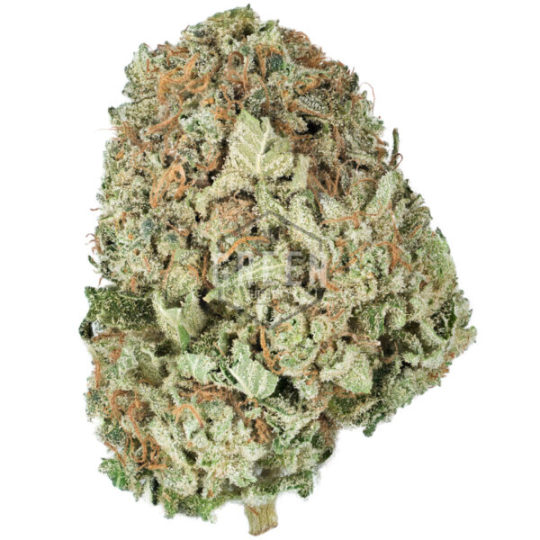
Welcome to the world of holistic healing and well-being through the lens of our California-based weed dispensary, dedicated to providing top-notch hybrid strains. At our dispensary, we take pride in our commitment to helping patients worldwide find low-cost cannabis solutions for anxiety, pain, and mental health disorders. In this blog post, we'll delve into the therapeutic benefits of hybrid strains, discuss their unique characteristics, and guide you on the path to discovering the perfect hybrid strain for your needs.
Understanding Hybrid Strains:
Hybrid cannabis seeds are the result of crossbreeding indica and sativa plants, combining the best of both worlds to create a diverse range of effects. The goal is to strike a balance between the relaxing and calming properties of indicas and the energizing and uplifting qualities of sativas. This balance makes hybrid strains versatile and suitable for various therapeutic purposes.
Buy Hybrid Strain: A Gateway to Holistic Wellness:
Tailored for Anxiety Relief: Hybrid strains offer a nuanced approach to anxiety relief. The calming influence of indica strains, coupled with the mood-enhancing effects of sativas, can provide a sense of tranquility without inducing sedation. Explore our collection to find the ideal hybrid strain that suits your anxiety management needs.
Pain Management Redefined: Whether you're dealing with chronic pain or discomfort from specific conditions, our hybrid strains are crafted to offer a comprehensive solution. The combination of indica's muscle relaxation and sativa's anti-inflammatory properties can contribute to a more holistic and effective pain management strategy.
Mindful Mental Health Treatment: Mental health is a priority, and our hybrid cannabis seeds are carefully selected to address various mental health disorders. From mood disorders to stress management, hybrid strains provide a tailored approach to promoting mental well-being.
Hybrid Strains for Sale: Our Diverse Collection:
Explore our extensive catalog of hybrid strains for sale, each carefully curated to meet the diverse needs of our customers. Here are some highlights from our collection:
[Godzilla Glue:
Balanced hybrid with a focus on anxiety relief.
Aroma profile: [Describe the terpene profile and flavor notes].
Recommended for: Anxiety, stress, and relaxation.
[Bruce Banner Strain]:
Energetic hybrid designed for daytime use.
Aroma profile: [Highlight the terpenes and flavors].
Recommended for: Boosting mood, focus, and creativity.
Ordering Process:
Our dispensary takes pride in discreetly shipping worldwide and to all 50 states, ensuring that our valued customers have access to premium hybrid strains without compromise. Visit our online store to explore our offerings, place an order, and embark on a journey toward holistic wellness.
Conclusion:
As advocates for the therapeutic benefits of cannabis, we invite you to discover the healing power of hybrid strains. Whether you're seeking anxiety relief, pain management, or support for mental health, our dispensary is committed to providing you with the highest quality products. Embrace the world of hybrid strains and elevate your well-being today.
2 notes
·
View notes
Text
From Seed to Doorstep: The Journey of Weed in Northern Virginia
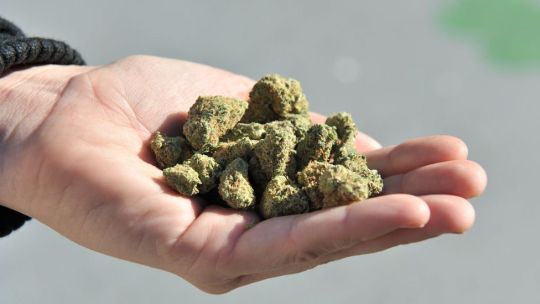
The legalization of marijuana for recreational use in Virginia has ushered in a new era, especially in Northern Virginia, where residents are experiencing the transformative journey of cannabis from seed to doorstep. With the emergence of weed delivery services in Northern Virginia, the entire process of procuring and enjoying marijuana has been streamlined, providing consumers with unparalleled convenience and choice.
Cultivation and Innovation: Weed in Northern Virginia
The journey begins with cultivation, where skilled local growers in Northern Virginia cultivate a diverse range of cannabis strains. From classic Indicas to potent Sativas, these plants are nurtured with care and expertise. The legalization of weed in Northern Virginia has encouraged innovation in cultivation techniques, resulting in high-quality, potent strains that cater to various consumer preferences.
Harvesting the Best: Curated Selections for Weed Delivery in Northern Virginia
After meticulous cultivation and harvesting, consumers in Northern Virginia can now access a curated selection of marijuana products through weed delivery services. These services offer an extensive menu, including premium flower buds, concentrates, edibles, and topicals. The emphasis is not just on quantity but on quality, ensuring that consumers receive products that meet the highest standards.
Technology and Convenience: Ordering Weed in Northern Virginia
The integration of technology into the cannabis industry has revolutionized the way consumers order marijuana. With user-friendly websites and mobile apps, residents of Northern Virginia can browse through a vast selection of products, read detailed descriptions, and make informed choices. Ordering weed delivery in Northern Virginia is as simple as a few clicks, allowing consumers to customize their purchases according to their preferences.
Legal Framework: Ensuring Compliance and Safety
One of the key aspects of the journey of weed in Northern Virginia is the adherence to the legal framework. Weed delivery services in Northern Virginia operate within the boundaries of state regulations, ensuring that all transactions are legal and compliant. Consumers can have peace of mind, knowing that they are engaging with licensed and reputable businesses that prioritize their safety and satisfaction.
Community Engagement: Supporting Local Businesses
The legalization of weed in Northern Virginia has not only created opportunities for consumers but has also bolstered the local economy. By supporting licensed dispensaries and delivery services, residents are actively contributing to the growth of local businesses. These businesses, in turn, invest in the community, creating jobs and fostering economic development.
Personalized Experience: Weed Delivery Tailored to You
Perhaps one of the most significant advantages of weed delivery in Northern Virginia is the personalized experience it offers. Knowledgeable staff and customer service representatives are available to assist consumers, providing guidance on product selection, usage, and dosage. This personalized approach ensures that consumers, whether beginners or experienced users, can make choices that align with their preferences and needs.
Conclusion: A Seamless Journey, A World of Possibilities
The journey of weed in Northern Virginia, from seed to doorstep, epitomizes the evolving cannabis landscape in the region. With the convenience of weed delivery services in Northern Virginia, consumers are no longer limited by geographical constraints or availability. Instead, they have access to a world of possibilities, where quality, variety, and convenience converge seamlessly. As the industry continues to grow and innovate, the journey of weed in Northern Virginia is bound to become even more exciting, offering residents a glimpse into a future where cannabis is not just a product but an experience tailored to individual tastes and preferences.
2 notes
·
View notes
Text
Finding the Best Place to Order Cannabis Seeds: Why The Clone Conservatory Should Be Your First Choice
When starting a cannabis grow, one of the most crucial steps is finding the best place to order cannabis seeds. With numerous cannabis seed companies vying for attention, it can be overwhelming to decide where to invest your money. However, choosing the right source is key to a successful grow, and that’s where The Clone Conservatory stands out.
Why Choosing the Right Seed Bank Matters
The quality of your cannabis seeds directly impacts the success of your grow. Poor-quality seeds can lead to low germination rates, weak plants, and disappointing yields. That’s why finding the best place to order cannabis seeds is essential. By choosing a reputable seed bank like The Clone Conservatory, you can ensure that you’re starting your grow with the best possible genetics.
What Makes The Clone Conservatory the Best Place to Order Cannabis Seeds?
Top-Quality Genetics
At The Clone Conservatory, we pride ourselves on offering only the highest quality cannabis seeds. Our extensive selection includes a wide variety of strains, from potent indicas to uplifting sativas and everything in between. Each seed is carefully selected for its genetic stability and potential to produce robust, healthy plants.
Reputation Among Cannabis Seed Companies
The Clone Conservatory has earned a reputation as one of the most reliable cannabis seed companies in the industry. Our customers consistently praise our high germination rates, excellent customer service, and the overall quality of our seeds. When you order from us, you’re choosing a company that growers across the USA trust.
Expert Support and Guidance
Whether you’re a novice grower or an experienced cultivator, we’re here to help. The Clone Conservatory offers comprehensive support to ensure your growing experience is successful. Our team is available to answer any questions you may have about our strains, growing techniques, or the ordering process. We’re committed to your success. Raed more- https://handyclassified.com/finding-the-best-place-to-order-cannabis-seeds-why-the-clone-conservatory-should-be-your-first-choice
0 notes
Text
Distillate: For Those Who Crave Consistency
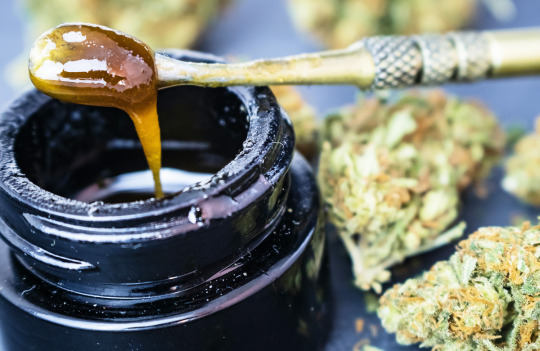
Weed is weird. Think of beer if you will. Every time you buy a certain brand of beer, it’s the same. You may end up with a can or a glass bottle or even a pint, but a Heineken tastes like a Heineken and a Miller Light tastes like a Miller Light every time. This is because making beer is really not all that different than baking. A set of inputs are added with specific ratios and measured out the same each time making a homogenous end product. Cannabis however is very different.
The humidity of the room that weed is grown in changes the quality of the end product. One cut grown from seed of Banana Punch will vary wildly from another growers cut grown from the same seed pack of Banana Punch. The differences come down to everything from natural genetic variations present in plants to environmental factors in the growing process that change the terpene or cannabinoid output or profile.
For those that crave consistency, the solutions are few. Sure you can find some hometown favourites and consistently support those vendors. But if you’re traveling or just want something different, distillate is a good option for folks who want a consistent and reliably similar experience every time.
Producing cannabis distillate involves utilizing a specialized apparatus to heat a solution to a precise temperature, enabling the vaporization of a particular compound within the solution without causing its degradation. Subsequently, the vaporized compound is efficiently condensed back into a liquid state, effectively segregating it from the other ‘undesirable’ compounds present in the original solution.
A straightforward illustration of distillation can be seen in the purification process of water. Elevating the temperature of water to 100°C (212°F) leads to the vaporization of the H2O molecules, while any unwanted impurities are left behind. Swiftly cooling the water vapour then results in the re-condensation of pure, distilled water.
Just like distilled water, distilled cannabis oil is stripped off impurities and terpenes or flavours are added back later if at all. Because of this, most distillate is pretty much the same. There are levels of quality for sure, but good distillate is good distillate.
Distillate can be used in cartridges or dabbed, but one of the best uses is baking. Not only does distillate not leave a weedy taste, but it is very potent per gram. If you’re baking with distillate and you know the THC percentage you can even figure out roughly how much THC will be in each treat you make…roughly. Be careful with at home baking math and trusting lab tests on cannabis labels.
However, it’s true that baking is one of the best uses for distillate. It also save a lot of time over making weed butter. Weed butter, while it works, is a pain in the butt to make and everyone knows how dank a pot brownie or cookie can taste when it’s made with weed butter. In addition, it can be pretty expensive to buy ounces to dump into pounds of butter. Cannabis distillate is shelf stable and lasts forever seemingly if stored correctly. All these reasons are great examples of why distillate is better than weed butter for at home cooking. The downsides are that it’s pretty sticky. Because of that it can be a bit difficult to work with. If using a bulk jar or syringe, submerging the base of the vessel in warm water can help loosen up the product for easier use. For cleanup expect to use isopropyl alcohol.
Here are some Distillate products available for mail order in Canada:
1g Vape Cartridges by Elevated Extracts come in a variety of strains. Each cartridge contains 1g of premium HTFSE. With strains like Trainwreck and Durban Poison these are sure to be tasty and hit nice. What’s so convenient about distillate is that it can be packed up in cartridges. That means the consistent flavour and strength consumers love can be brought with them discreetly wherever they go. Most cartridge stans swear by them for their lack of heavy, lingering smoke smell as well.
You can also buy larger amounts in a jar for dabbing or cooking here through Chronic Farms. Their distillate is produced in BC, Canada, using high-quality starting materials that are free of pesticides and heavy metals, resulting in an exceptional final product. All the products undergo laboratory analysis to maintain both potency and consistency. In marijuana, the primary psychoactive component is Delta-9-Tetrahydrocannabinol (THC), along with Delta-8-THC. The distillate exclusively contains Delta-9-THC, ensuring consumers receive a potent experience.
Lastly, Vape Cartridges from Straight Goods Supply Co. a newer cannabis company based out of beautiful British Columbia, Canada. These are 95% distillate and 5% organic terpenes. This is another vape cartridge that will hit hard and deliver the same experience ever single time.
If that’s your thing, distillate is the way to go. Check out the deals above. As always Potsmart gives customers 15% off on all of them.
By Rico Suave, for Potsmart
2 notes
·
View notes
Text
100 Strains Renewal Program—Harlequin

The strain is a cross between three landrace strains, a Nepali Indica and two landrace strains from Thailand and Switzerland, which were then pollinated by a Colombian Gold male.
The strain was originally cultivated for making hash/concentrates, but rather than creating a resinous strain that was high in THC, the breeder ended up creating a strain that gained notoriety for its elevated CBD content.
These patchwork genetics may account for the strain’s name - “harlequin” originally referred to the brightly-patterned costumes of traditional Italian clowns of the same name. It's worth noting that harlequin is a clone-only strain, meaning that in order to cultivate it, prospective growers need to obtain clippings from a mature plant.
These clones are often available at cannabis conventions and expos, or could be obtained from a fellow grower.
Although several digital seed companies purport to sell packaged seeds of Harlequin, such claims should be regarded with suspicion, as the strain’s growers claim to have never released seeds.

3 notes
·
View notes
Text
New seeds for a new season, try out he new crosses available, Platinum Cookies, Skywalker OG, Peanut Butter Breath, Rainbow Kush auto to new Blueberry CBD seeds! Use code LUVOFSEEDS20 & save 20% off your order! 🌱

#cannabis seeds#medical marijuanna#homegrowers#homegrown#marijuana#cannabis#420life#cannabisgrowers#weedlife
2 notes
·
View notes
Text

all my pink plant based beauty products . 💖💕
#beauty #vitamins #hair #products #skin #nails #beautyproducts #plantbased
2 notes
·
View notes